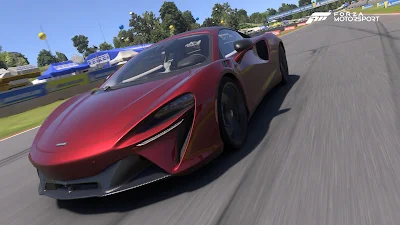Racing is McLaren's religion. Every racing disciple from Le Mans to Formula 1 is part of McLaren's daily routine. So are the supercars that made them. When McLaren created cars like the comfort-oriented McLaren GT and the V6 PHEV powerhouse Artura, how did these cars affect McLaren's reputation?
Well, that's for me to find out. These bottom-dollar papayas from the McLaren fleet may not be as well-known as its greatest hits, like the 720S and the Senna, but when it comes to performance, they are in a class of their own.
The McLaren GT is a serious super grand tourer that's all about refinement on the road. It's separate from every other McLaren supercar because it uses its own monocoque body structure developed specifically for this car. It's also a hundred kilograms lighter than its closest rival and can accommodate up to 570 liters of boot space. Under the hood, the McLaren GT uses a specially-made 4.0L V8 Twin Turbo engine producing 620PS of power and 630Nm of torque. Mated to a 7-speed SSG transmission, it can do 0-60mph in 3.2 seconds and a top speed of 203mph.
The McLaren Artura is the company's first V6-powered PHEV supercar. It injects most of its motorsport know-how into the making of this unorthodox machine. The 3.0L V6 Twin Turbo engine is mated to an axial flux motor and a refrigerant-cooled Li-ion battery producing 680PS of power and 720Nm of torque. Mated to an 8-speed SSG, it sprints from 0-60mph in three seconds and has a top speed of 205mph. Running on electricity alone, it can go for as little as 19 miles. Aside from the performance, the Artura has near-perfect weight distribution courtesy of its carbon bodywork, front double wishbone, multi-link rear, Proactive Damping Control, electro-hydraulic power-assisted steering, Carbon Ceramic Discs, forged aluminum brake calipers, and specially-developed Pirelli P-ZERO tires. It even comes with a Variable Drift Control that can adjust its drifting angle.
To see which of the bottom-dollar papayas was the superior one, I went to the main festival site to conduct this unnecessary experiment. Let's roll the tape!
And here are the results...
McLaren GT - 1m12.973s
Artura - 1m09.620s
The Artura is better than the McLaren GT. While the McLaren GT's comfort-oriented dynamics are out of character on the track, the Artura still packs McLaren's racing DNA even in its unorthodox powertrain. It's no wonder the Artura was chosen for GT4 Class duty.
McLaren's GT and Artura are considered "bottom-dollar Papayas" in the McLaren fleet. However, both cars performed well on the track, showcasing their potential to be part of the fleet.
Well, now that my quick log about the two unsung papayas is over, it's time for my little aftershow where the McLaren GT and the Artura are taking centerstage and with that, it's off to the dressing room floor!
Miss Amane Sumeragi, you're off to the Secret Garden! It looks like my McLaren GT is ready for its Eternal Revue.
Rinrin Shinomiya is a member of AISMIRIN and Quartet STAR, and her specialty is data analysis. Since driving the Artura can be as much fun as wrestling a brown bear, I've brought her in to analyze the data from my test drive. If her data is accurate, we're in for a long run. Wow, looks like I've completed the Quartet STAR design collection. Why not take a look at them sometime?
Donning their respective roles that match their dynamics, the two McLarens are ready to tackle two EventLab masterpieces. The McLaren GT takes on another re-enactment of a certain racetrack from a certain racing game while the Artura takes on an EventLab re-enactment of the Road Course segment of Mobility Resort Motegi. Take it from Rinrin, she has studied these EventLab creations completely, and looks like we're good to go. VTR, start!
Eternal Revue or Bear Bear Bear? Amane or Rinrin? Which one will you go for?
The McLaren GT and the Artura are already worthy of respect, but recent updates will make them even more praiseworthy. These updates will enhance their performance and handling, making them even more fun to drive.
Looking forward to more from these "bottom-dollar" papayas.




































.png)


.png)
.png)
.png)
.png)

.png)
.png)
.png)




